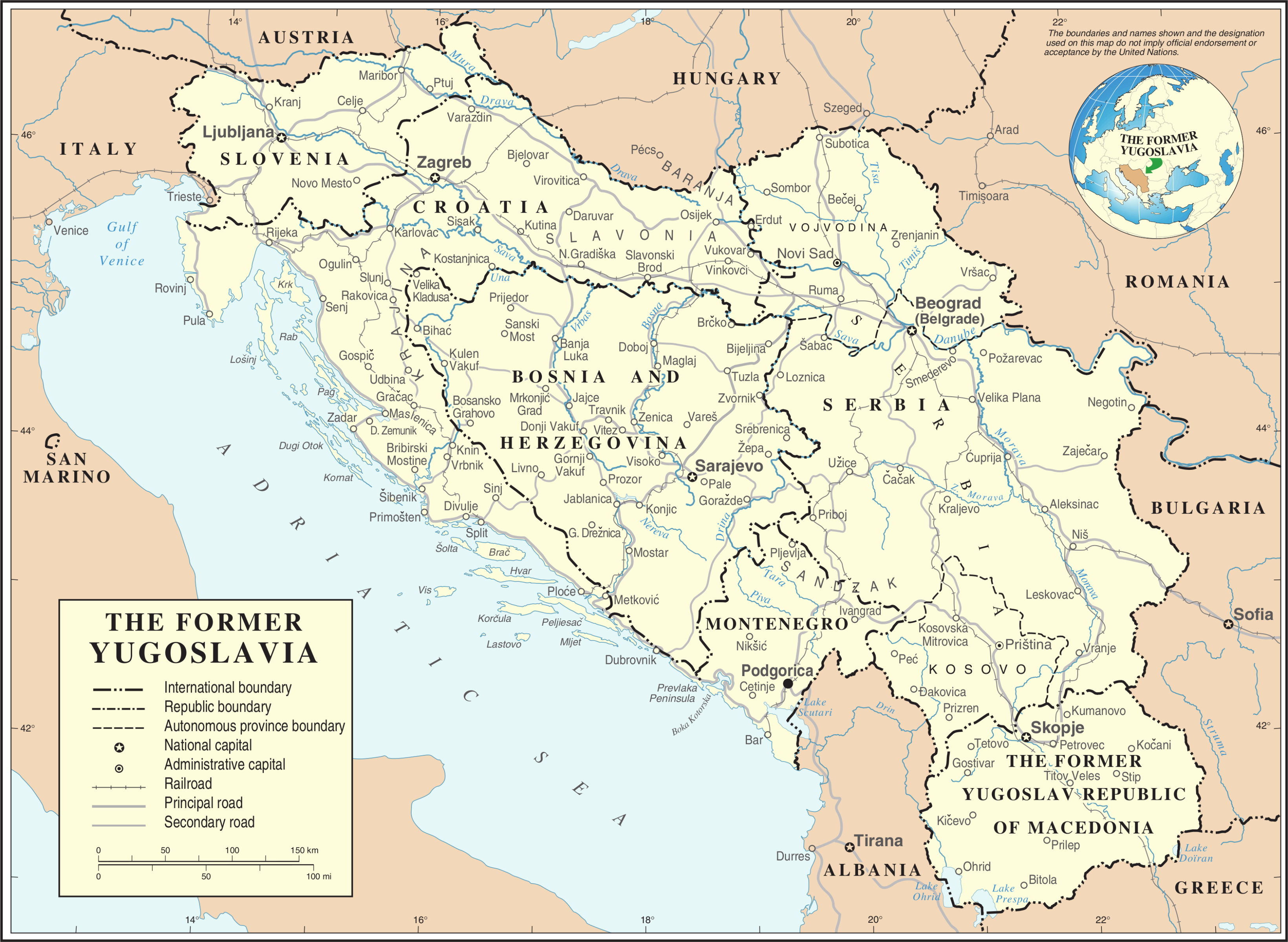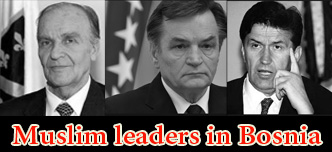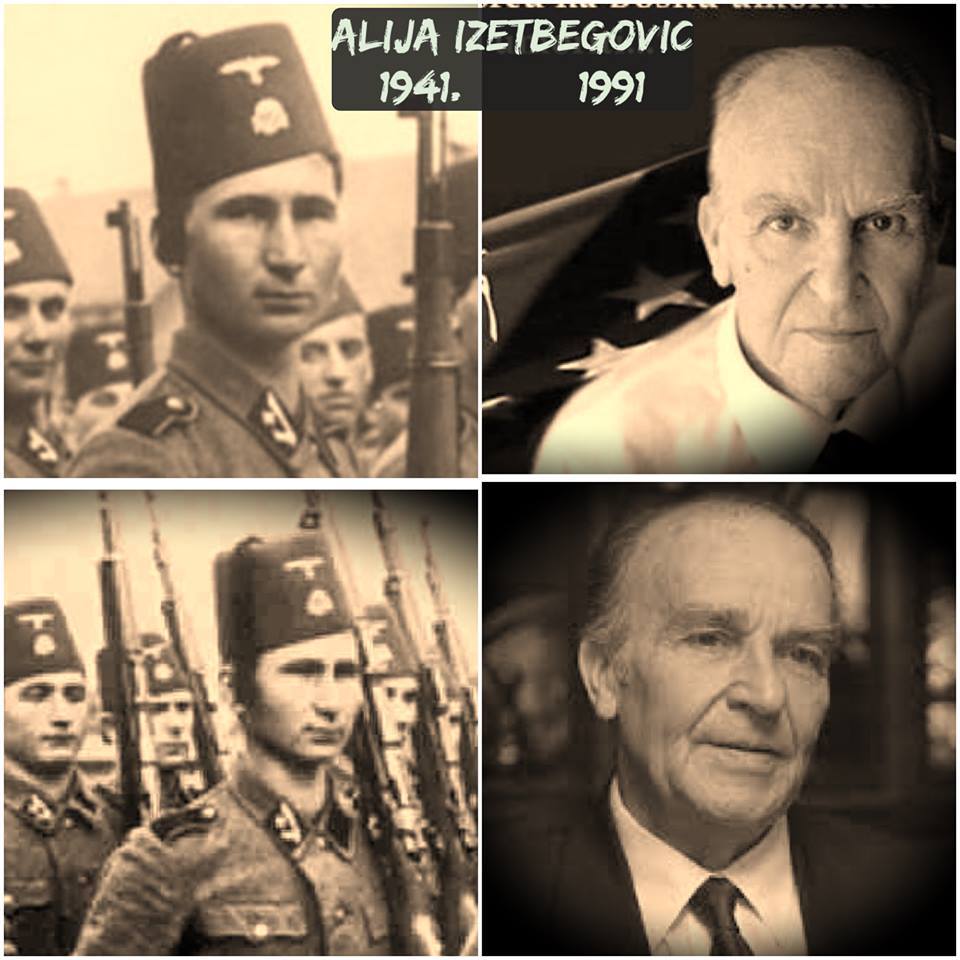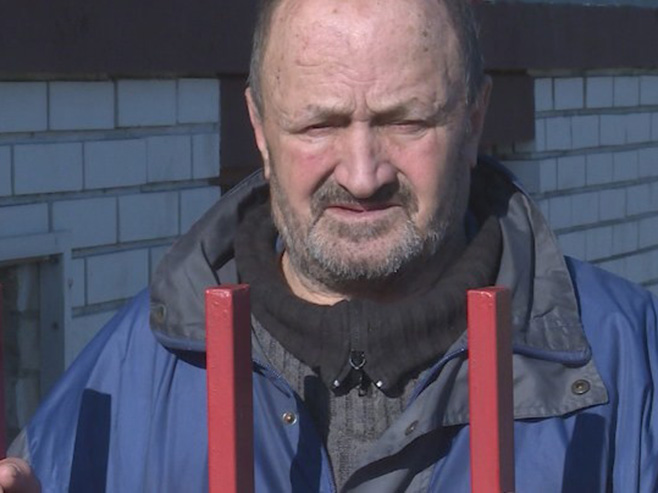|
|
Period:
Yugoslav Wars
Region:
Bosnia
The Croatian and Muslim crimes in Brod - Bosnia 1992
The crime in Bosanski brod refers to murders of Serbian civilians from March until October, 1992 committed by Croatian military forces in Bosanski Brod (at the north of Bosnia and Herzegovina) together with members of Muslim paramilitary units and later, the Muslim army of B&H.
The monstrosity of this crime against Serbian civilians makes it one of the most terrific scenes seen on the war-affected areas of Bosnia and Herzegovina during 1990s. These crimes against Serbian civilians have never been processed.
The Hague Tribunal has never shown an interest in prosecution of criminals and the Prosecutor’s Office of Bosnia and Herzegovina deliberately postpone dealing with this cases. Even EU representatives in Bosnia and Herzegovina do not put pressure on authorities in Sarajevo to prosecute perpetrators although they are bound to do so according to the founding charter of EU.
BACKGROUND
SFR Yugoslavia was a federal state made up of 6 republics (FR Slovenia, FR Croatia, SR Bosnia, and Herzegovina, SR Montenegro, SR Serbia, and SR Macedonia). Both Yugoslavia and the JNA were established on the principle of “brotherhood and unity” of all peoples and nationalities who lived in the SFRY.
The social and economic system of the SFRY was socialism.
The 1974 Constitution of Yugoslavia brought about the decentralization of the SFRY, which later enabled the separatist forces in Slovenia and Croatia, and later in Bosnia and Herzegovina to begin the dissolution of Yugoslavia, followed by bloody wars and persecution.

In all the constitutions of Yugoslavia, the Yugoslav People's Army was defined as the only legitimate armed force in the territory of the SFRY, and therefore, the only internationally recognized military entity. At the end of 1989, the SFRY Assembly passed amendments to the Constitution, thus replacing the one-party system with the multiparty system, which meant that besides the Alliance of Communists of Yugoslavia, other parties could now be formed.
At the end of January 1990, the Alliance of Communists of Yugoslavia collapsed, at the 14th SKY Congress in Belgrade, when sharp verbal clashes between Slovenian and Serbian delegates occurred regarding the future of the joint state of the SFRY.

Opposing sides - Kučan and Milosević
The Slovenian delegation left the session, immediately followed by the delegation of the FR Croatia, which brought the issue of the congress into question. After them, the delegations of the FR of Bosnia and Herzegovina and the FR of Macedonia also left the congress.
Thus, after 45 years, the rule of the communists in SFRY ended.
The situation in Bosnia and Herzegovina
Bosnia and Herzegovina has been a central republic within the Socialistic Federal Republic of Yugoslavia, where Muslims, Serbs, Croats, and national minorities lived. On 18 November 1990, a multiparty election took place, the first after World War 2. The government was formed by the anti-communist parties- SDA, SDS, and HDZ. MP that won the highest number of votes (47,4%) was Muslim Fikret Abdić, a businessman from Velika Kladuša.

Alija Izetbegović, Ejup Ganić, and Haris Silajdžić
However, he was under pressure by Muslim extremists to step aside since he was against the war and conflicts with Serbs. As it turned out, he only served as bait for Muslim voters.
Alija Izetbegović, a pre-war criminal and author of the notorious chauvinistic “Islamic Declaration” became president of the presidency of B&H. Momčilo Krajišnik, a member of the Serbian party (SDS) became president of the Parliament, while a Croat Jure Prelivan was appointed to the prime minister of the Federal Republic of Bosnia and Herzegovina. The coalition ruled for 15 months. It collapsed at the beginning of the conflicts in Bosnia in April 1992.
Leaders of Muslim Party of Democratic Action- Alija Izetbegović, Ejup Ganić, Haris Silajdžić, and others, advocated the independence of Bosnia and Herzegovina from Yugoslavia as early as 1991. Muslim SDA and Croatian HDZ shared a goal of an ethnically and religiously cleansed state. However, Bosnian Croats wanted integration with Croatia, while Muslims wanted to create an Islamic state.

Izetbegović participated in WW II in notorious Bosnian Muslim 13th Waffen
Mountain Division of the SS Handschar (1st Croatian) member,
known for the WW II genocide of Serbs
The Bosnian independence propaganda was spread by the media and press. As early as October 1991, the press in Sarajevo published open threats directed towards Serbian people. Among everything else, it was announced that the notorious Hadschar Division, Ustasha unit that committed horrible crimes against Serbs in the Independent State of Croatia (NDH) during 1941-1944, would be re-established. This unit had been mostly filled with Muslims. Ustasha crimes in NDH reached their peak in Bosnia itself with Prebilovci, Drakulić, Bileća, Gacko, Donja Gradina, Kupres as the most suffering places.
August 1995 witnessed organized arming of paramilitary forces of Muslims and Croats in Bosnia and Herzegovina through channels of the parties SDA and HDZ, intending to attack the Yugoslav People's Army (JNA). In October 1991, local committees of paramilitary units "Green Berets" and "Patriotic League" were established. In the second half of 1991, Mostar was full of members of the JNA, who came from Croatia (Dalmatia and Dubrovnik area), from where they were expelled or withdrawn. They further withdrew in Užice (Serbia) at the end of March 1992.

Sefer Halilović - founder of Bosnian Muslim paramilitary forces
On March 1, 1992 a referendum on the separation of Bosnia and Herzegovina from Yugoslavia was organized with 62.4% of voters having voted for independence. A day later in Sarajevo, members of the "Green Berets", led by a criminal Ramiz Delalić aka Ćelo started shoting at a Serbian wedding party at Baščaršija having killed the groom's father Nikola Gardović and wounded priest Radenko Miković.
This was an event that announced the bloody war in Bosnia-Herzegovina in the 1990s, but this also served as cause to dissolve still nationally-mixed police in Sarajevo. After that, numerous attacks on Serbian positions in Bosnia and Herzegovina and on members of the JNA occured (Sijekovac, Kupres, Sarajevo, Tuzla...). International representatives remained silent to these events.
The situation in Bosanski Brod
At that time, the municipality of Bosanski Brod had 34,138 people of which 13,993 (40.98%) were Croats, 14,389 (42,14%) were Serbs, 14,389 (42.14%) were Muslims, and 1,664 (4.82%) the rest.
At the beginning of 1992 Serbs feared that they would suffer genocidal actions as they did in NDH. They were being provoked by their Croatian and Muslim neighbours all the time. They were being fired from their jobs. Their movements were limited. They would receive blackmails and threats via phone calls.
On March 3, 1992 the Croatian-Muslim military forces together with the 108th Brigade of the Croatian National Guard took over Bosanski Brod, which was in the state of occupation and local Serbian people were intimidated, physically abused and systematically plundered in their private homes. Dozens of Serbs from Bosanski Brod municipality were taken to camps in Croatia and Bosanski Brod itself was transformed into a camp. This was the first time from the beginning of the war that Croatia conducted open aggression against Bosnia and Herzegovina and the rest of Yugoslavia.
On the bridge which connected Bosanski Brod and Slavonski Brod there was inscription from the beginning of March, 1992, that “Serbs and dogs are forbidden to cross over”. Orthodox churches found themselves under the attack of joint Croatian-Muslim forces. The Orthodox gravery was devastated and The Church of Holy Mary (built in 1890) was completely destroyed, and the church property was plundered.
The monument devoted to the victims of fascism from World War 2 was also destroyed and monuments of a hero: Drago Vidošević and Frico Pavlik. Jewish monument in Tulek was destroyed, too.
ORDERS OF THE CRIME
-
Nijaz Čausević aka Medo, commander of The Emergency Unit of HVO
-
Marko Miloš, born in 1951
-
Miroslav Kopljar, born in 1969
CRIMES IN EACH PLACE
Sijekovac
Croatian military units crossed the river Sava on March 26, 1992 and together with there Croatian-Muslim forces committed crimes against Serbian civilians in Sijekovac near Brod. In the village Sijekovac within only one hour, 9 people, including children of Serbian families Zečević, Radanović, Milošević and Trivić were killed. Some corpses were taken by a refrigerator car and thrown into the river, and 15 houses were burnt and destroyed.

Serbian victims in Bosanski Brod, March 26th 1992.
Father Luka and his two children killed
In the next few days Croatian and Muslim military forces killed 51 Serbs in Sijekovac, and in total 70 Serbs were killed and 9 are still missing. Croatian military forces first entered the house of Zečević family. They immediately killed Jovan Zečević (72) and his sons Milan, Vasa and Petar. They then killed Luka Milošević and his sons Željko i Dragan (17), and then Vid Radanović. They even killed immobile old man, Sreto Trivić.
The team responsible for process of documentation of war crimes in the Republic of Srpska possess documents about murders of Serbian children on the territory of Bosanski Brod. Based on statements of witness who survived massacre in Sijekovac, there are indications that organs were taken from children before liquidation which were then sold across Europe on the black market, especially in Germany. The Association that searches for missing persons from Brod holds information that 500 Serbs were killed during the Croatian eight-month-long occupation.
From many mass graves, 286 corpses were exhumed and at least that number is still missing. The largest grave is river Sava. In the area of Brod municipality there were more than 10 camps where Serbs were imprisoned, mostly civilians- women, children, old people- 2,000 in total. Many of them were later taken to other camps in Slavonski Brod and Orašje. The HOS units and Handžar divisions under the command of Ante Prkacin, stopped 4 buses of Roma people who were fleeing from Srebrenica and Skelane on March 27, 1992 to enter Croatia. This was not allowed so they were liquidated. This was testified by Sakib Belić, the member of HOS.
Testimony of Jelica Zečević:
- “I knew something terrible would happen. My husband went to work that day in refinery, but he didn’t come to workplace. Croatian and Muslim neighbours took him back, and put guards at all entries into the village. On that day, at 5 pm, the village was tremendously bombed. In the basement of our house lots of Serbian neighbours found shelter. When the fire stopped, a large group of soldiers of Republic of Croatia entered the house of Zečević family. Among them, I recognized our Croatian and Muslim neighbours.
They were in uniforms of the Army of Republic of Croatia. They immediately started to curse and threaten to kill us.They took my husband and tied him to nearby tree. They threatened that they would rape me and then pour fuel to burn me. I bagged them not to do that. First, they killed my husband. They didn’t even spare my groomsman and father-in-law. I survived because a Croatian neighbour said they were forbidden to kill women.”
Beside members of Zečević family, Croatian soldiers killed three members of Milošević family: father and two sons, Marko Radanović and Sreto Trivić, who were taken from the basement of Zečević house, where they hid from granates, and ten more Serbs. Ljubica Sedlić is a witness of an evil which occured in Sijekovac on May 26, 1992. She saw the crime committed upon Zečević family. On the next day, her house was burnt with her immobile husband in it. She heard perpetrators shout: “this is the army of Paragin and Ante Prkacin. Serbs, don’t forget us!” Ljubica and some other persons were taken to the chamber in Sijekovac, and later to camps.
Kricanovo
On May 5, 1992 in the Kricanovo village, mostly populated by Croats, units of the Army of B&H and Croatian HOS killed Serbian civilians with cold weapons in the house of Zarko Tomićević. They plundered the house before liquidation.
Ploj
From May 8-12, 1992 units of the Army of B&H and Croatian HOS entered the village Ploj and killed mostly old and powerless people. First, they plundered their property and then burnt their houses.
They threw victims in draw wells or left them in burnt houses.
Zborište
On May 11, 1992 the largest Serbian village in Bosanski Brod municipality, Liješće, was attacked. Numerous Croatian and Muslim units attacked this village and lots of arms was used during the slaughter of Serbs. Lots of Serbs were killed in their homes and dozens were taken to concentration camps.
A church devoted to the Descent of the Holy Spirit, built in 1869, was destroyed.
Vrelo
On May 12, 1992 in the nationally mixed village Vrelo, in Brod municipality, units of the Muslim army of B&H, attacked only Serbs and killed them with cold weapon.
Many were taken to camps and their property was plundered. The village church built in 1939, was destroyed.
Klakar
On May 13, 1992 Croatian-Muslim forces entered Serbian villages, Gornji and Donji Klakar and Vinska, conducted extensive plunder, killed some civilians, while others took to camps. The Orthodox Church devoted to Saints Cosmas and Damian in Klaker, was destroyed and burnt.
11 civilians were killed in Klaker with only 5 being identified. Two old Serbs were killed in Vinska, the orthodox church was destroyed and burnt, as well the monument devoted to NOR soldiers. The property of Serbs from Vinska was plundered.
The murder of Mačinko family
On June 1, 1992 in Bosanski Brod in the street M. Tita no. 117, the family of Mačkinko Branko was killed. During occupation of Bosanski Brod more than 100 Serbian civilians were killed.
The murder of Bardak family
On August 17, 1992 members of the muslim army of B&H brutally killed Bardak family in Bosanski Brod, and plundered their property.
TRIAL AND INDICTMENTS
There are numerous evidence about the crime against Serbian civilians in Bosanski Brod and surrounding villages in 1992. Complete documentation related to this case was submitted to investigators of the Hague Tribunal on May 22, 2002, but the Hague Tribunal transferred this case to the Prosecutor’s Office in B&H in 2006 which deals with the war crimes on the territory of Bosnia and Herzegovina.

Slavko Grabovac - serbian victim and witness
On December 2010, Zemir Kovačević, former member of the 101st Brigade of HOS was arrested in Sweden on the basis of international arrest warrant, and not until October 29, 2011 was he extradited to the Prosecutor’s Office of B&H.
On May 26, 2015 the Appellate Counsel of the Court of B&H confirmed in the Second Instance Verdict 10 years of imprisonment to Kovačević for murder of (two) Serbian civilians, maltreatment, looting and taking civilians to perform forced labour.
LIST OF VICTIMS
-
Jovo V. Zečević, born in 1920, Sijekovac, murdered on May 26, 1992
-
Vaso J. Zečević, born in 1958, Sijekovac, murdered on May 26, 1992
-
Milan J. Zečević, born in 1950, Sijekovac, murdered on May 26, 1992
-
Petar J. Zečević, born in 1953, Sijekovac, murdered on May 26, 1992
-
Luka I. Milošević, born in 1943, Sijekovac, murdered on May 26, 1992
-
Dragan L. Milošević, born in 1974, Sijekovac, murdered on May 26, 1992
-
Željko L. Milošević, born in 1968, Sijekovac, murdered on May 26, 1992
-
Mirko V. Radovanović, born in 1965, Sijekovac, murdered on May 26, 1992
-
Sreto M. Trivić, born in 1927, Sijekovac, murdered on May 26, 1992
-
Andrija P. Martić, born in 1935, Bosanski Brod, murdered on May 26, 1992
-
Miomir A. Martić, born in 1961, Bosanski Brod, murdered on May 26, 1992
-
Duško M. Dujanić, born in 1967, Bosanski Brod, murdered on May 26, 1992
-
Duško A. Milošević, born in 1972, Bosanski Brod, murdered on April 4, 1992
-
Ivica J. Skvarc, born in 1971, Bosanski Brod, murdered on April 4, 1992
-
Nedeljko N. Jugović, born in 1944, Bosanski Brod, murdered on April 4, 1992
-
Dragan N. Jugović, born in 1972, Bosanski Brod, murdered on April 4, 1992
-
Darinka V. Tomičević, born in 1941,Kricanovo, murdered on May 5, 1992
-
Ruža D. Tomičević, born in 1932, Kricanovo, murdered on May 5, 1992
-
Nedeljko S. Tomičević, born in 1935, Kricanovo, murdered on May 5, 1992
-
Dragutin S. Tomičević, born in 1934, Kricanovo, murdered on May 5, 1992
-
Marko T. Tomičević, born in 1931, Kricanovo, murdered on May 5, 1992
-
Ljubo D. Gojković, born in 1928, Ploj, murdered on May 8, 1992
-
Smiljana S. Gojković, born in 1947, Ploj, murdered on May 8, 1992
-
Dragica I. Ivanović, born in 1932, Ploj, murdered on May 8, 1992
-
Jelica P. Ivanović, Ploj, murdered on May 8, 1992
-
Toda A. Kalabić, born in 1921, Ploj, murdered on May 8, 1992
-
Slavko S. Kalabić, born in 1917, Ploj, murdered on May 8, 1992
-
Jelka Petrović, born in 1913, Ploj, murdered on May 8, 1992
-
Simeuna V. Petrović, born in 1913, Ploj, murdered on May 8, 1992
-
Petar Dj. Petrović, born in 1912, Ploj, murdered on May 8, 1992
AFTERMAHT
Bosanski Brod was liberated in October 1992 in the Operation "Koridor 92", when united units of the Army of Bosnian Serbs (1. Bosnian Krajina's Corps and East-Bosnian Corps) and the Special Police Forces of the Serbian Krajina defeated Croatian occupation forces in east Posavina.
Tags:
Please, vote for this article:
Visited: 4601 point
Number of votes: 7
|